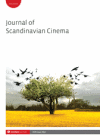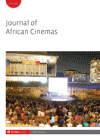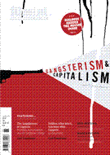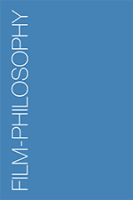
CINEJ Cinema Journal
Scope & Guideline
Exploring the Art and Impact of Cinema.
Introduction
Aims and Scopes
- Cultural Representation in Cinema:
The journal emphasizes the analysis of how various cultures, identities, and social issues are represented in films, highlighting the impact of cinema on societal perceptions and narratives. - Interdisciplinary Approaches:
CINEJ promotes interdisciplinary research methodologies, encouraging the integration of film studies with sociology, psychology, history, and cultural studies to provide a comprehensive understanding of cinematic texts. - Focus on Global Cinema:
The journal does not limit itself to a specific geographical area but instead explores cinema from diverse cultures, including but not limited to Turkish, Indian, and African cinemas, reflecting on their unique narratives and filmmaking practices. - Critical Film Theory:
CINEJ publishes works that engage with critical film theory, including post-colonial theory, feminist theory, and psychoanalytic approaches, to explore the deeper meanings and implications of cinematic works. - Exploration of Technological Aspects of Film:
The journal also addresses the technical and aesthetic elements of filmmaking, such as sound design, cinematography, and editing, and their influence on narrative and audience reception.
Trending and Emerging
- Representation of Marginalized Voices:
There is an increasing trend towards exploring the representation of marginalized communities, including gender minorities and ethnic groups, reflecting a broader societal push for inclusivity and representation in media. - Interrogation of Gender and Sexuality:
Recent publications demonstrate a growing interest in the complexities of gender and sexuality in film, particularly in how these themes are portrayed and challenged within various cinematic contexts. - Environmental and Ecocritical Perspectives:
Emerging themes include ecocritical analyses of films, focusing on environmental issues and the portrayal of climate change, which resonate with global conversations about sustainability and ecological awareness. - Impact of Technology on Cinema:
The relationship between technology and cinema has become a prominent theme, with discussions surrounding digital filmmaking, streaming platforms, and the evolving nature of audience engagement in the digital age. - Cinematic Responses to Political Turmoil:
There is a notable increase in studies exploring how cinema responds to current political climates and crises, with films serving as reflections or critiques of contemporary socio-political issues.
Declining or Waning
- Traditional Film Criticism:
There seems to be a waning interest in conventional film criticism that does not incorporate contemporary theoretical frameworks or interdisciplinary approaches, as newer works tend to embrace more complex analyses. - Focus on Classic Films:
The analysis of classic films appears to be declining, as recent publications increasingly prioritize contemporary cinema and pressing socio-political issues rather than historical critiques. - Western-Centric Perspectives:
There is a noticeable reduction in papers that solely focus on Western cinema. The journal is shifting towards global narratives, indicating a move away from a Eurocentric approach in film studies. - Narrative Structures in Mainstream Cinema:
The exploration of traditional narrative structures in mainstream cinema is less frequent, with more emphasis on avant-garde and experimental narratives that challenge conventional storytelling.
Similar Journals

MILLENNIUM FILM JOURNAL
Exploring the Depths of Cinema's Cultural Tapestry.MILLENNIUM FILM JOURNAL, published by MILLENNIUM FILM WORKSHOP INC, stands as a pivotal platform for exploration and discourse within the realm of film studies. With its ISSN 1064-5586, the journal has been noteworthy in delineating the complexities of visual arts and performing arts, contributing significantly to academic scholarship between the years 2009 to 2016, and in 2018. Though its coverage has been discontinued in Scopus, the journal has attained a respectable position within its category, ranking #320 out of 502 in the Arts and Humanities field. Researchers, professionals, and students alike are invited to engage with interdisciplinary discussions that illuminate the cultural and theoretical dimensions of cinema. While currently not offering open access options, the journal continues to serve as a vital resource for those deeply invested in the study of film, making it a respected voice in visual arts and performance research.

Asian Cinema
Advancing Scholarly Dialogue in Asian Film StudiesAsian Cinema is a distinguished academic journal dedicated to exploring the vibrant landscape of cinema across Asia, published by INTELLECT LTD, a recognized name in scholarly publishing. With its ISSN 1059-440X and E-ISSN 2049-6710, this journal has carved a niche within the realms of Communication and Visual Arts and Performing Arts, holding a 2023 Q4 ranking in Communication and a more favorable Q2 ranking in Visual Arts and Performing Arts. Operating out of the UK, specifically at THE MILL, PARNALL RD, BRISTOL BS16 3JG, ENGLAND, Asian Cinema provides a platform for interdisciplinary dialogues, critiques, and analyses that contribute significantly to the understanding of cinema as a cultural artifact. Acknowledged for its robust contribution to scholarly research, the journal commands a Scopus rank of 151 out of 667 in Visual Arts and Performing Arts, placing it in the 77th percentile, while achieving a 366 out of 511 rank in Communication, reflecting its ongoing relevance in the field. Although it operates under a traditional access model, Asian Cinema remains vital for researchers, professionals, and students alike, enriching academic discourse and providing valuable insights into the rapidly evolving cinematic practices across Asia.

Journal of Scandinavian Cinema
Diving into the Innovations of Scandinavian CinemaThe Journal of Scandinavian Cinema, established in 2014 and published by INTELLECT LTD, serves as a premier platform dedicated to the interdisciplinary field of film studies with a specific focus on Scandinavian cinema. With an impressive Q2 category ranking in Visual Arts and Performing Arts for 2023, and a Scopus rank placing it in the top 62nd percentile of its category, this journal is instrumental in advancing scholarly dialogue within the arts community. The journal strives to explore and critique cinematic expressions from the Nordic countries, contributing to a nuanced understanding of cultural narratives and filmic innovations. Committed to fostering accessibility and engagement, it caters to a diverse audience including researchers, professionals, and students keen to delve into the artistic, cultural, and political dimensions of cinema. The Journal of Scandinavian Cinema is essential for anyone interested in the evolution and impact of film in the Scandinavian context, promising rich insights and a robust collection of scholarly articles.

Studies in Eastern European Cinema
Connecting Scholars to the Heart of Eastern European CinemaStudies in Eastern European Cinema is a distinguished journal dedicated to exploring the rich and diverse landscape of cinematic art in Eastern Europe. Published by Routledge Journals, Taylor & Francis Ltd, this journal has carved a unique niche since its inception in 2010, providing insightful analysis and fostering dialogue among scholars, professionals, and students in the fields of Communication and Visual Arts and Performing Arts. With a current impact factor reflected in its respective quartile rankings, which position it in Q4 in Communication and Q2 in Visual Arts and Performing Arts, the journal serves as an essential platform for research and discourse on the cinematic contributions of Eastern Europe. Featuring contributions that analyze historical contexts, artistic trends, and cultural implications, it aims to broaden the understanding of Eastern European cinema's role within the global film landscape. While it offers a traditional subscription model, its ongoing commitment from 2010 to 2024 ensures it remains at the forefront of academic inquiries, appealing to a growing audience dedicated to the appreciation and scholarship of Eastern European cinematic arts.

Journal of African Cinemas
Connecting Cultures Through the Lens of African CinemaJournal of African Cinemas is a pioneering publication dedicated to exploring the dynamic field of African cinema and its cultural impacts. Published by INTELLECT LTD in the United Kingdom, this journal serves as a crucial platform for researchers, filmmakers, and students interested in understanding the complexities of film within the African context. With ISSN 1754-9221 and E-ISSN 1754-923X, the journal focuses on various aspects of cinema, including theory, production, and reception, highlighting the rich tapestry of storytelling from the African continent. Despite being classified in Q4 in Communication and Q3 in Cultural Studies and Visual Arts & Performing Arts for 2023, it stands out by capturing the multifaceted identities and experiences portrayed in African films. Engaging with a diverse array of interdisciplinary topics, the Journal of African Cinemas invites contributions that foster critical discourse and promote a deeper understanding of the unique aesthetic and social narratives present in African filmmaking. As it converges into a significant scholarly resource from 2017 to 2023, this journal is an essential read for anyone invested in the intersection of culture and cinema.

Film International
Advancing Interdisciplinary Insights in Film Studies.Film International is a prominent journal dedicated to the exploration of film and its cultural, social, and artistic significance. Published by INTELLECT LTD, this journal serves as a platform for interdisciplinary studies in the field of film criticism, theory, and scholarship, contributing valuable insights from both established and emerging researchers. With an ISSN of 1651-6826 and an E-ISSN of 2040-3801, the journal is an essential resource for those engaged in the realms of communication, cultural studies, and visual arts, though it is currently classified in the lower quartiles of these fields (Q4). Noteworthy for its critical perspectives and diverse content, Film International enhances the dialogue surrounding cinematic practices and their impact on society. Researchers, professionals, and students can explore its rich assemblage of articles and reviews that reflect the evolving landscape of film studies, making it a significant addition to the academic community focused on the art of film.

Hrvatski Filmski Ljetopis
Analyzing the Rich Tapestry of Croatian Cinema.Hrvatski Filmski Ljetopis, published by the Croatian Film Clubs Association, serves as a pivotal academic journal in the field of film studies, celebrating and analyzing the rich cinematic heritage of Croatia and beyond. With an ISSN of 1330-7665, this journal caters to researchers, practitioners, and students who are passionate about the art of filmmaking, encompassing both theoretical discourse and practical implications. Although it is not currently available as an open-access publication, its curated content is of significant value to anyone interested in the evolution, critique, and history of film in a Croatian context, having previously been indexed in Scopus until coverage was discontinued. The journal operates out of Zagreb, Croatia, at the Croatian Film Clubs Association headquarters, and aims to foster scholarly dialogue while contributing to the broader field of national and international cinematography.

SIGHT AND SOUND
Illuminating Film's Impact on SocietySIGHT AND SOUND is a prestigious journal published by the British Film Institute, dedicated to the exploration of cinema and its cultural significance. With an ISSN of 0037-4806 and an E-ISSN matching the same, this journal has been a critical platform for film studies since its inception, contributing valuable insights to the realms of visual arts and performing arts. Despite its discontinuation in the Scopus database post-2021, SIGHT AND SOUND commands respect within its field, currently holding a Q3 rank among Visual Arts and Performing Arts journals. Operating from 21 Stephen Street, London W1P 1PL, England, it serves as a vital resource for researchers, professionals, and students looking to deepen their understanding of film theory, critique, and history. While access to its articles is not open, the journal continues to influence the discourse in film studies, making it a significant asset in academic and professional circles.

Projections-The Journal for Movies and Mind
Pioneering Research at the Crossroads of Film and MindProjections: The Journal for Movies and Mind is a leading scholarly publication dedicated to exploring the intricate relationship between cinema, cognition, and culture. Published by BERGHAHN JOURNALS, this journal has made significant strides since its inception in 2015, achieving impressive rankings in its fields, including a Q1 classification in both Cultural Studies and Visual Arts and Performing Arts for 2023. With an ISSN of 1934-9688 and an E-ISSN of 1934-9696, Projections engages the academic community by delivering innovative research that scrutinizes how films influence and reflect human thought processes and societal structures. While it operates outside the Open Access model, the journal offers critical insights and diverse perspectives that are essential for researchers, professionals, and students alike. With its remarkable impact factor and solid reputation in the arts and humanities domain, Projections serves as an indispensable resource for those dedicated to understanding the psychological and cultural implications of cinematic narratives.

Film-Philosophy
Fostering Multidisciplinary Dialogues in Film and ThoughtFilm-Philosophy is an esteemed academic journal published by Edinburgh University Press, specializing in the intersection of film studies and philosophical discourse. Since its launch in 1998, this Open Access journal has provided a platform for scholarly debates and innovative research, allowing for free and unrestricted access to its content, which has significantly contributed to the global dialogue on visual culture. With a commendable impact illustrated by its Q1 ranking in Visual Arts and Performing Arts and Q2 in Philosophy, the journal sits within the top quartile of its field. Operating from the United Kingdom, Film-Philosophy is committed to fostering a multidisciplinary approach, inviting contributions from researchers, professionals, and students alike. By engaging with critical theories and the aesthetics of cinema, the journal stands as a vital resource for understanding the philosophical implications of film and its cultural significance.